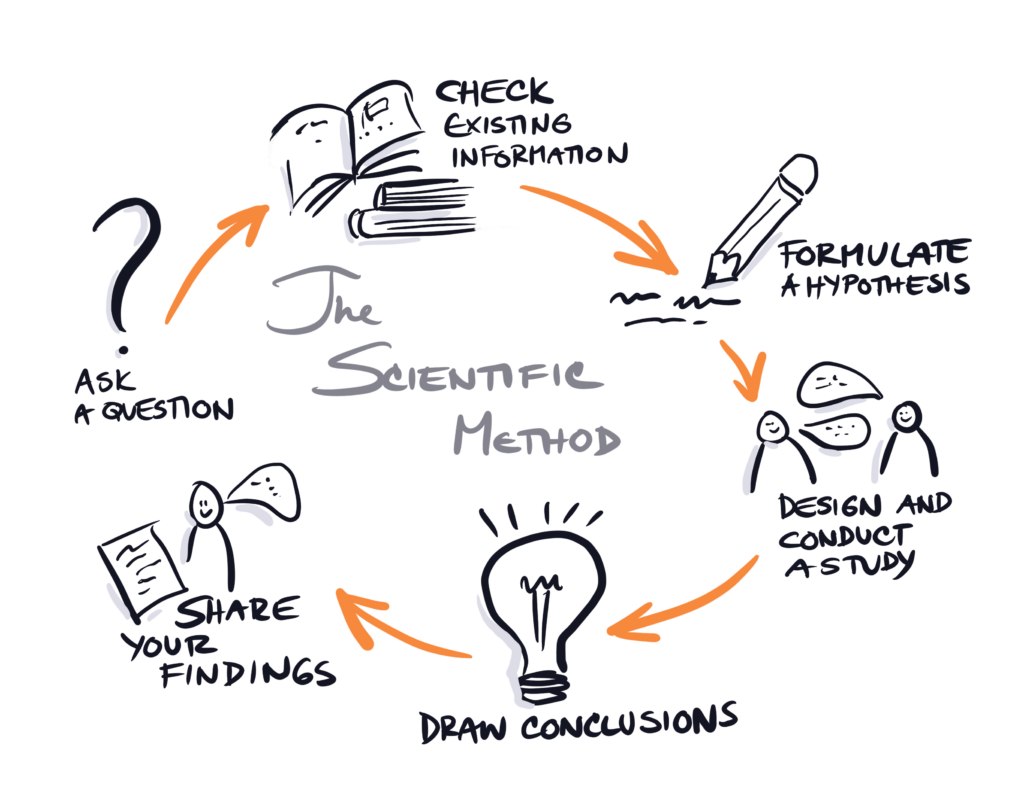Undergraduate Research (Introduction)
What is Undergraduate Research – and is it for me?
Research is about curiosity, creativity, discovery, and innovation. It’s about asking questions and looking for answers. It’s about carefully searching, examining, and collecting information. A group of TRU students involved in undergraduate research projects share their definitions in the video below:
As an undergraduate student researcher, you will most likely not navigate the full research process from the beginning until the end. A faculty member or a another student will work with you so that you can participate in parts of the process, like collecting and analyzing data, or sharing findings.
Many students say that research first sounds scary or intimidating, but the initial hesitation quickly changes to curiosity and excitement after they understand the steps that they need to take to conduct a particular study. For many students, being involved in undergraduate research is one of the most impactful learning experiences.
Let’s look at some common research concepts and vocabulary that you may come across as you consider getting involved in undergraduate research:
The Scientific Method
The scientific method is one way to look at the research process. It starts by asking a question, followed by gathering existing information , coming up with an tentative answer or explanation (called hypothesis), planning and conducting a study, analyzing and interpreting the results, and sharing the findings.

Primary and Secondary Research
Primary research is research that you conduct yourself. You collect the original data to answer your research question. For example, you may interview or survey a specific group of people, or collect original data in a lab. Secondary research is research in which you analyze or synthesize existing research. Someone else collected the original data and you look for an existing good fit to answer your research question. For example, you may find data or scholarly sources investigating the same or similar topic.
Research Approaches
What are your research plans? Research approaches are often categorized as qualitative, quantitative or mixed. Generally speaking, qualitative approaches use words, quantitative approaches use numbers, and mixed approaches use both qualitative and quantitative elements (Creswell & Creswell, 2018). Examples of qualitative approaches include (often open ended) questionnaires, interviews, or observation; the data is often collected in a written narrative and may be difficult to precisely measure. Examples of quantitative approaches include (often closed ended) collection of numerical data, or questionnaires with rating scales; the data lends itself to statistical analysis and tends to be larger in scale.
Research Methods
How do you want to collect your data? There are many methods to choose from, many of which can be used by both qualitative and quantitative approaches. For example, surveys can be qualitative (open ended, descriptive answers) and quantitative (yes/no/not applicable answers). Observation, experiments, interviews, focus groups, secondary data analysis, or mixed methods are some other frequently used methods.
Ethics
If you interact with human beings or animals during primary research, you will need an approval from the university’s research ethics board before you can start your study. This is to ensure that humans and animals are treated kindly by the researchers. The ethics board also awards biohazard certifications. At TRU, researchers submit an application describing their research, and provide the board with supporting documents like consent forms, interview questions, or data storage and disposal plans.
Analysis and Interpretation
As you collect your data, you will start to see how it relates to your initial question and hypothesis; answers will start to form. Objectivity comes to play here – researchers need to distance themselves from from their subjective beliefs as much as they can. This is true for primary and secondary research. A good secondary research study should consider and acknowledge multiple views on the subject.
Sharing your Findings
Sharing what you have learnt is often called dissemination, or knowledge mobilization. This can include writing and submitting articles to scholarly journals, presenting at conferences, blogging, or podcasting.
The next section of this workshop provides a closer look at undergraduate research.
References: